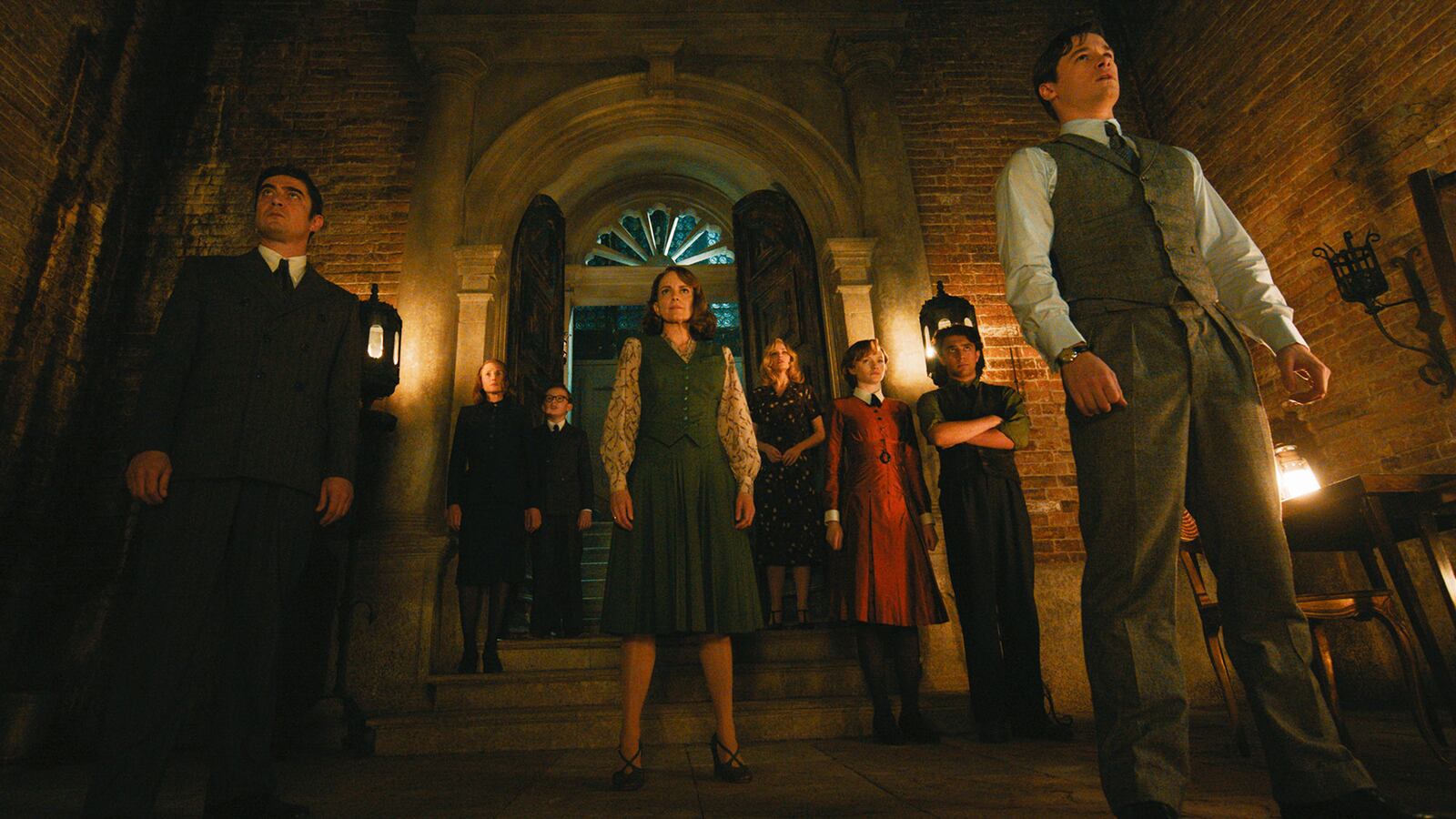If there is one thing that Kenneth Branagh’s Hercule Poirot films have become known for, it’s being bad. Scratch that; there are two things: being bad and starring alleged abusers. The abuse allegations brought against star Johnny Depp soured 2017’s Murder on the Orient Express, and 2022’s Death on the Nile felt downright repugnant after the Armie Hammer of it all. Neither of those things were exactly Branagh’s fault (though Depp was cast only a few months after Amber Heard’s allegations), but they didn’t exactly help the actor-director’s takes on Agatha Christie’s famous gumshoe soar, either.
Despite being mired by their controversies, Branagh’s first two Poirot films—in which he also stars as the detective—were ridiculous enough to enjoy (though some of that amusement should be attributed to Christie’s durable source material). The movies made good use of their all-star ensembles to mask their issues with pacing, and built enough silly mystery atop their confined atmosphere for some fun, if forgettable, Saturday matinee fare. But with Branagh’s latest Poirot outing, A Haunting in Venice, those tricks are getting as old as the aging detective, who is coming out of retirement for a macabre twist on the classic whodunit. Branagh may have avoided working with any names that would generate headlines for the wrong reasons this time, but A Haunting in Venice is far worse than controversial: It’s downright boring.
That’s not for lack of trying, of course. The film is happy to pepper in new loud noises or jump scares every other minute, preying on the pacemakers of the poor older generation who will buy a ticket to see Christie’s work adapted once more; this time, Branagh pulls from her 1969 novel The Hallowe’en Party. But all of those frights—which only become less potent and easier to predict as they stack up—are just an obnoxious distraction from the film’s startling lack of intrigue. Even more surprising is how quickly the movie fritters what compelling mystery it has by trying to effectively blend sleuthing with horror, something Christie herself was no stranger to.
A Haunting in Venice finds Poirot in the titular sinking city in 1947, hiding away after the events of the last film left his little Belgian heart in tatters. It’s not long before he’s tracked down by the mystery novelist, and his old friend, Ariadne Oliver (Tina Fey), whose book about one of his cases put the detective on the map. On Halloween morning, Ariadne tells Poirot of a seance happening that night at a nearby palazzo. There, renowned medium Joyce Reynolds (Michelle Yeoh) will be communicating with the spirit of Alicia Drake (Rowan Robinson), a deceased woman believed to have been possessed by the apparitions that haunted her home and drove her to suicide. Poirot reluctantly agrees, and the film hops between the formulaic plot beats of the franchise from there.
Conventional as it may be, A Haunting in Venice masterfully creates a chilling atmosphere, with quite a bit of help from the shot-on-location canals of Venice giving the film an old-world charm. The architecture and setting sunlight of a late October evening suggest an eeriness that the film makes good on for the first third of its runtime, before the mystery sets itself into motion when a murder occurs at the seance. Suddenly, everyone is a suspect: Rowena Drake (Kelly Reilly), mother to Alicia and owner of the house; Olga (Camille Cottin), the palazzo’s caretaker; Dr. Ferrier (Jamie Dornan), Alicia’s doctor, hopelessly stricken with post-war PTSD; Maxime Gerard (Kyle Allen), Alicia’s ex-fiance; and a slew of others who all have a motive for the killing.

If only viewers could spend enough time with these characters to get a sense of their personalities beyond a single monologue each, but A Haunting in Venice doesn’t allow for that. There’s no time to waste when there is a hodgepodge of discordant filmmaking techniques to cram into one movie. Wide-angle shots crash into Steadicam sequences, creating a dissonant viewing experience that would be enough to trigger a migraine as it were, without all of the ensuing hard cuts and choppy editing. At one point, after an especially loud and grating sequence during the seance, a talking parrot simply says, “Holy shit.” Couldn’t have said it better myself.
Those little bits of comic relief are a welcome reprieve from the relentless cacophony, even if they are few and far between. Most of the laughs are awarded to Poirot, whose dry musings about wanting to get out of this line of work before his soul is snatched from his body are the film’s best moments. Branagh’s Poirot is stalwart and up for the challenge, but everyone else—save for Cottin and Yeoh, whose brief-but-stirring work lends some respectability to the film—seems lost in another movie entirely. Fey in particular seems out of wack; she’s doing her best Mrs. Maisel voice, despite her face always looking like she knows exactly what an iPhone is. At one point, while Poirot critiques the seance’s validity, Ariadne cracks that she heard War of the Worlds on the radio, so she definitely has a handle on what’s real and what isn’t. It rings far more like a parodic line Fey would’ve written into a 30 Rock episode than a joke that a character of this era would’ve been keen to make in the midst of potential demonic terror.
Its horror elements are where A Haunting in Venice especially falters, trying and failing to meld scares with the only thing more frightening than the supernatural: human nature. As the body count rises, the film forgets to convey how frightening it is to be walking amongst a human who could snap at any moment. Instead, it supplies another loud bell toll, glass shattering, offscreen scream, or scary face in a mirror. It’s all of cinema’s parlor tricks cobbled into one movie, with little more impact than that of a January horror film, dumped into theaters but packed with enough jump scares to make the price of admission worth it.
But even those feel cheapened, weighed down by the necessity to keep the film at an accessible PG-13 rating. The attempts to imbue this mystery with enough horror to make it worthy of its Halloween season release ultimately diminish the effectiveness of the crime at hand. And without any standout performances or notably compelling changes to its screenplay’s adapted material, A Haunting in Venice sinks far faster than the town it’s set in. As the water rises, Poirot’s mustache just barely keeps him afloat until the puzzle has been solved, and we can all go home.






